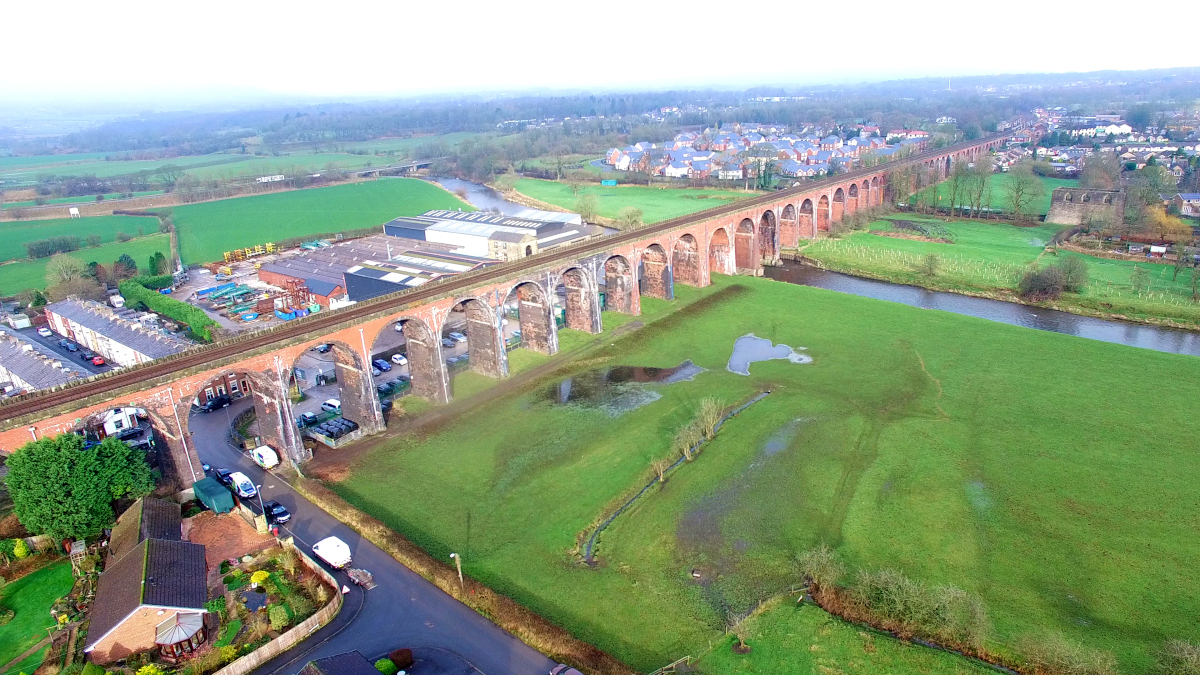Laser and drone technology recreates Victorian viaduct like never before

Laser scanners and drones have been used to map every inch of the iconic Whalley railway viaduct in Lancashire to secure its future for passengers and freight.
The 21st century technology is being used by Network Rail to plan essential maintenance over the next six to eighteen months which will secure the 19th century structure for the future.
A total of 300 scans were taken of the 48-arch viaduct which carries the Blackburn to Clitheroe railway line 550 metres across the Ribble Valley.
These scans of the 176-year-old structure have now been turned into a 3D computer model, creating a digital blueprint of the viaduct’s current condition.
This allows teams to closely monitor any changes in the structure and identify problems in the ornate Victorian brickwork.
It is also safer for the workforce – previously only manual checks using abseilers or scaffolding towers would find problems in the structure.
Phil James, Network Rail’s North West route director, said: “We’re always looking to innovate on the railway and seeing drones and lasers being used to care for such an historic structure is really impressive.
“Using this 21st century technology gives Whalley viaduct’s engineers a forensic way to plan its essential maintenance for the next 18 months. Great care and attention is going in to make sure our work is right from a heritage perspective. This digital model plays a major role in that as we secure the Grade II listed-structure’s future for passengers, local people and tourists.”
Network Rail has today (7 March) released the impressive footage of the Victorian viaduct as realised by the 21st century technology.
A LiDAR survey* was carried out by contractor Commendium.
Drone flights also took place as part of the survey taking high-definition photographs of the Grade II listed structure.
The data gathered was then used to build up the 3D computer model.
Richard Walters, chief executive officer for Commendium, said: “At first glance, scanning the Whalley viaduct looks easy. However, the proximity of other interests such as a factory, roads, public footpaths and domestic property has made this a more challenging project. The issue has been finding places to scan from so that we could capture all the necessary walls and features of the viaduct. Therefore local stakeholder co-operation has been essential and, frankly, without their enthusiastic help, the job would have been very much harder.“
Future maintenance work on Whalley viaduct will see
- brickwork repairs
- removal of vegetation and repairing the damage caused by plants and weeds
- viaduct strengthening work
- work to stop the viaduct’s bases – or piers – suffering from river erosion
Nigel Evans, deputy speaker of the House of Commons and Ribble Valley MP, said: “It is fantastic to see this cutting-edge technology being used to preserve such an important and beautiful piece of local history. I know many people travel long distances to see the iconic Whalley railway viaduct and it is so important that it is preserved for future generations. It is through projects like this one that its future can be ensured and I am pleased to see that Network Rail will be undertaking the necessary work to achieve this.”
